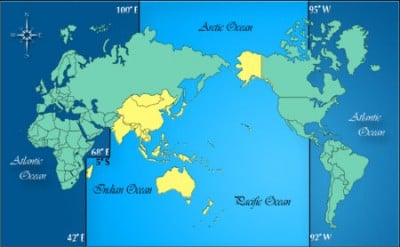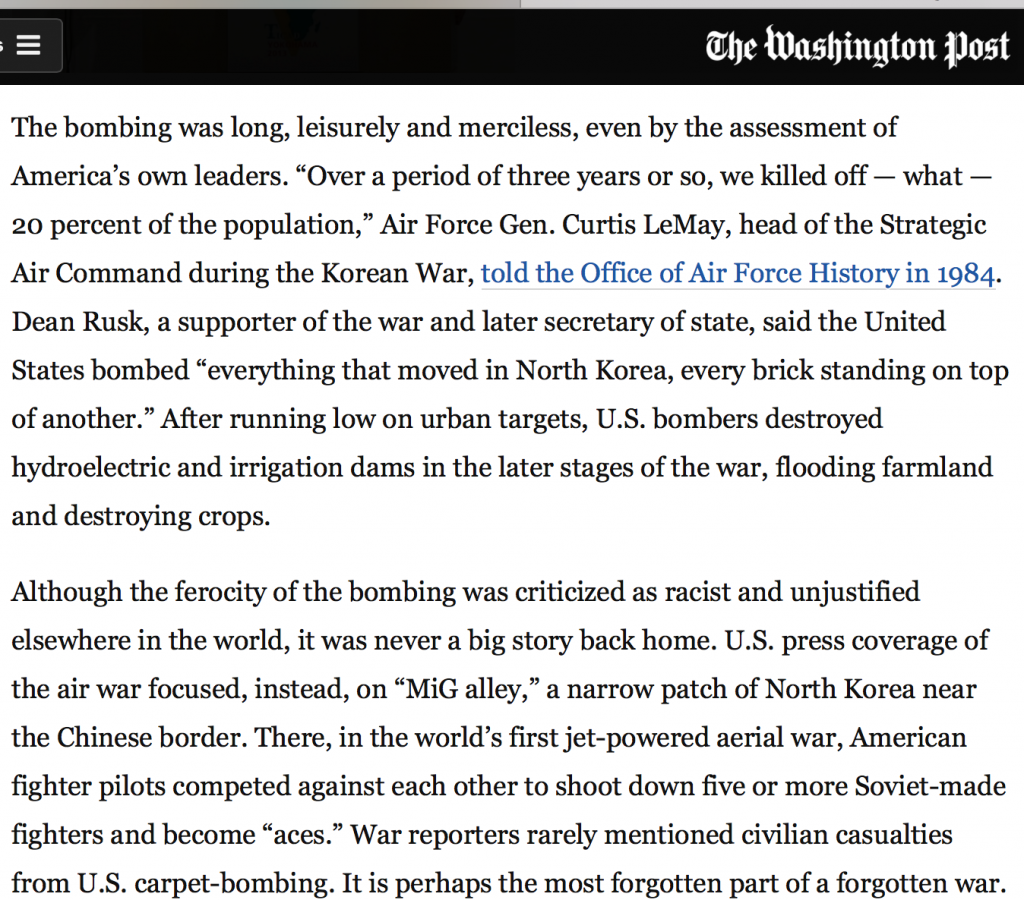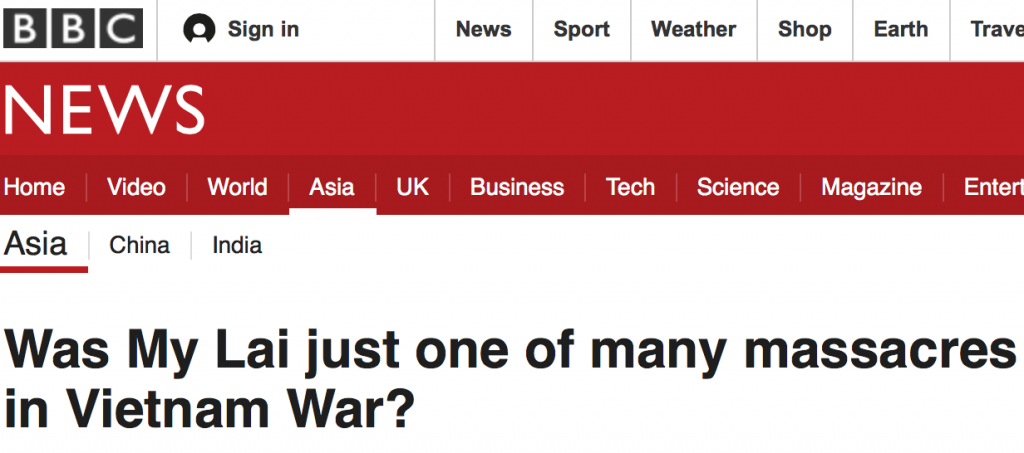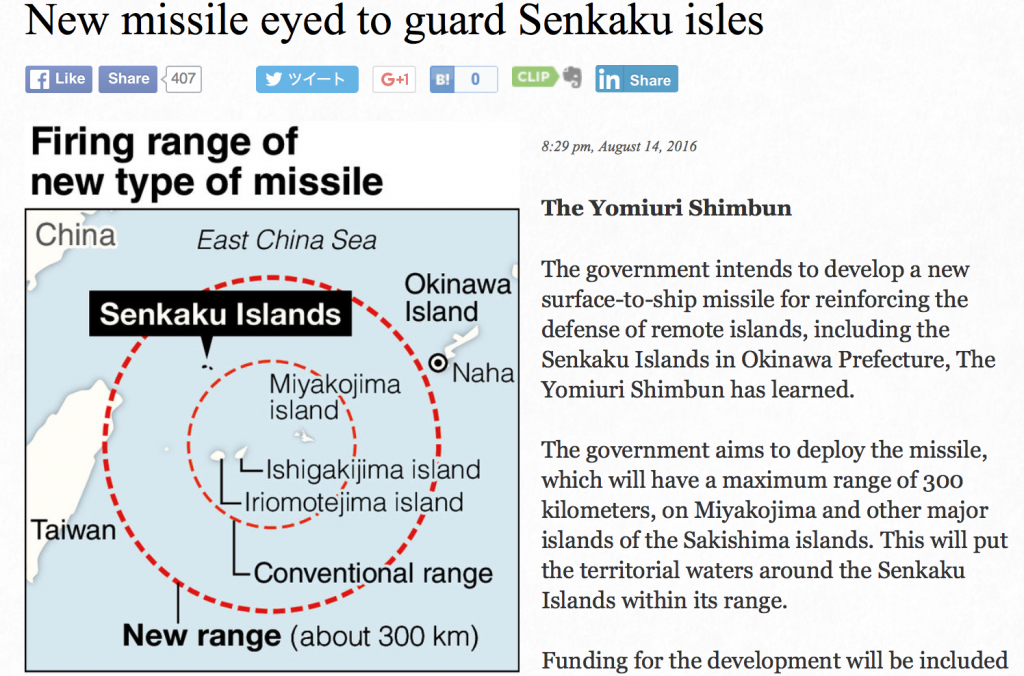It is important to focus on Southeast Asia and East Asia in a broader geopolitical context. China, North Korea as well as Russia are potential targets under Obama’s “Pivot to Asia”, involving the combined threat of missile deployments, naval power and pre-emptive nuclear war.
We are not dealing with piecemeal military endeavors. The regional Asia-Pacific military agenda under the auspices of US Pacific Command (USPACOM) is part of a global process of US-NATO military planning.
US military actions are carefully coordinated. Major military and covert intelligence operations are being undertaken simultaneously in the Middle East, Eastern Europe, sub-Saharan Africa, Central Asia and the Asia Pacific region. In turn, the planning of military operations is coordinated with non-conventional forms of warfare including regime change, financial warfare and economic sanctions.
The current situation is all the more critical inasmuch as a US-NATO war on Russia, China, North Korea and Iran is part of the US presidential election debate. War is presented as a political and military option to Western public opinion.
The US-NATO military agenda combines both major theater operations as well as covert actions geared towards destabilizing sovereign states. America’s hegemonic project is to destabilize and destroy countries through acts of war, support of terrorist organizations, regime change and economic warfare.
While, a World War Three Scenario has been on the drawing board of the Pentagon for more than ten years, military action against Russia and China is now contemplated at an “operational level”. U.S. and NATO forces have been deployed in essentially three major regions of the World:
- The Middle East and North Africa. Theater wars and US-NATO sponsored insurgencies directed against Afghanistan, Iraq, Libya, Syria, Yemen under the banner of the “Global War on Terrorism”
- Eastern Europe including Poland and Ukraine, with military maneuvers, war games and the deployment of military hardware at Russia’s doorstep which could potentially lead to confrontation with the Russian Federation.
- The U.S. and its allies are also threatening China under President Obama’s “Pivot to Asia”.
- Russia is also confronted on its North Eastern frontier, through the deployment of NORAD-Northcom
- In other regions of the World including Latin America and sub-Saharan Africa, US intervention is geared towards regime change and economic warfare directed against a number of non-compliant countries: Venezuela, Brazil, Argentina, Ecuador, Bolivia, Cuba, Salvador, Honduras, Nicaragua.
In sub-Saharan Africa, the thrust has largely used the pretext of “Islamic terrorism” to wage counterterrorism ops under the auspices of the US Africa Command (USAFRICOM).
In South Asia, Washington’s intent is to build an alliance with India with a view to confronting China.
Pivot to Asia and the Threat of Nuclear War
Within the Asia Pacific region, China, North Korea and Russia are the target of a preemptive nuclear attack by the US. It is important to review the history of nuclear war and nuclear threats as well US nuclear doctrine as first formulated in 1945 under the Truman administration.
HIROSHIMA AND NAGASAKI
“We have discovered the most terrible bomb in the history of the world. It may be the fire destruction prophesied in the Euphrates Valley Era, after Noah and his fabulous Ark…. This weapon is to be used against Japan … [We] will use it so that military objectives and soldiers and sailors are the target and not women and children. Even if the Japs are savages, ruthless, merciless and fanatic, we as the leader of the world for the common welfare cannot drop that terrible bomb on the old capital or the new. … The target will be a purely military one… It seems to be the most terrible thing ever discovered, but it can be made the most useful.” (President Harry S. Truman, Diary, July 25, 1945)
“The World will note that the first atomic bomb was dropped on Hiroshima a military base. That was because we wished in this first attack to avoid, insofar as possible, the killing of civilians..” (President Harry S. Truman in a radio speech to the Nation, August 9, 1945).
[Note: the first atomic bomb was dropped on Hiroshima on August 6, 1945; the Second on Nagasaki, on August 9, on the same day as Truman’s radio speech to the Nation]
Hiroshima after the bomb
Is Truman’s notion of “collateral damage” in the case of nuclear war still relevant? Publicly available military documents confirm that nuclear war is still on the drawing board of the Pentagon.
Compared to the 1950s, however, today’s nuclear weapons are far more advanced. The delivery system is more precise. In addition to China and Russia, Iran and North Korea are targets for a first strike pre-emptive nuclear attack.
US military documents claim that the new generation of tactical nuclear weapons are harmless to civilians. B61 mini-nuke depending on the model has a variable explosive capacity (one third to almost 12 times a Hiroshima bomb).
NUCLEAR DOCTRINE AND POLITICAL INSANITY
Let us be under no illusions, the Pentagon’s plan to “blow up the planet” using advanced nuclear weapons is still on the books.
The tactical nuclear weapons were specifically developed for use in post Cold War “conventional conflicts with third world nations”. In October 2001, in the immediate wake of 9/11, Defense Secretary Donald Rumsfeld envisaged the use of the B61-11 tactical nuclear bomb in Afghanistan. The targets were Al Qaeda cave bunkers in the Tora Bora mountains.
Rumsfeld stated at the time that while the “conventional” bunker buster bombs “‘are going to be able to do the job’, … he did not rule out the eventual use of nuclear weapons.” (Quoted in the Houston Chronicle, 20 October 2001, emphasis added.)
The use of the B61-11 was also contemplated during the 2003 bombing and invasion of Iraq as well as in the 2011 NATO bombings of Libya.
In this regard, the B61-11 was described as “a precise, earth-penetrating low-yield nuclear weapon against high-value underground targets”, which included Saddam Hussein’s underground bunkers:
”If Saddam was arguably the highest value target in Iraq, then a good case could be made for using a nuclear weapon like the B61-11 to assure killing him and decapitating the regime” (Defense News, December 8, 2003).
B61-11 tactical nuclear bomb. In 1996 under the Clinton administration, the B61-11 tactical nuclear weapon was slated to be used by the US in an attack against Libya.
All the safeguards of the Cold War era, which categorized the nuclear bomb as “a weapon of last resort”, have been scrapped. “Offensive” military actions using nuclear warheads are now described as acts of “self-defense”. During the Cold War, the doctrine of Mutually Assured Destruction (MAD) prevailed, namely that the use of nuclear weapons against the Soviet Union would result in “the destruction of both the attacker and the defender”.
In the post Cold war era, US nuclear doctrine was redefined. There is no sanity in what is euphemistically called US foreign policy.
At no point since the first atomic bomb was dropped on Hiroshima on August 6th, 1945, has humanity been closer to the unthinkable…
Nuclear War is Good for Business
Spearheaded by the “defense contractors” (Lockheed Martin, Northrop Grumman, Boeing, British Aerospace et al), the Obama administration has proposed a one trillion dollar plan over a 30 year period to develop a new generation of nuclear weapons, bombers, submarines, and intercontinental ballistic missiles (ICBM) largely directed at Russia and China.
War with Russia: From the Cold War to the New Cold War
Blowing up Russia, targeting Russian cities is still on the Pentagon’s drawing board. It is also supported by enabling legislation in the US Congress.
The US House of Representatives H.Res. 758 Resolution
On 18 November 2014, a major resolution H. Res. 758 was introduced in the House of Representatives. Its main thrust consists in portraying Russia as an “Aggressor Nation”, which has invaded Ukraine and calling for military action directed against Russia.
In the words of Hillary Clinton, the nuclear option is on the table. Preemptive nuclear war is part of her election campaign.
Source: National Security Archive
According to 1956 Plan, H-Bombs were to be Used Against Priority “Air Power” Targets in the Soviet Union, China, and Eastern Europe.
Major Cities in Soviet Bloc, Including East Berlin, Were High Priorities in “Systematic Destruction” for Atomic Bombings. (William Burr, U.S. Cold War Nuclear Attack Target List of 1200 Soviet Bloc Cities “From East Germany to China”, National Security Archive Electronic Briefing Book No. 538, December 2015
Excerpt of list of 1200 cities targeted for nuclear attack in alphabetical order. National Security Archive
The above declassified document provides an understanding of the magnitude of a first strike nuclear attack with more than 1000 Russian cities targeted.
The Contemporary Context involves a scenario of a nuclear attack on Russia.
“Kill the Russians”: The New Cold War is no longer Cold
A former CIA Official is calling for the “Killing of Russians”. The US media and the the State Department applaud:
Pivot to Asia: China is threatened by the US military in the South China Sea and the East China Sea
WAR WITH CHINA IS CURRENTLY ON THE DRAWING BOARD OF THE PENTAGON AS OUTLINED IN A RAND REPORT COMMISSIONED BY THE US ARMY
Whereas a clear U.S. victory once seemed probable, it is increasingly likely that a conflict could involve inconclusive fighting with steep losses on both sides. The United States cannot expect to control a conflict it cannot dominate militarily.
http://www.rand.org/content/dam/rand/pubs/research_reports/RR1100/RR1140/RAND_RR1140.pdf
Attack China Preemptively (“In Self Defense”)
The report is notoriously ambiguous. It focusses on how a war can be avoided while analyzing the circumstances under which a preemptive war against China is a win for the US:
The need to think through war with China is made all the more important by developments in military capabilities. Sensors, weapon guidance, digital networking, and other information technologies used to target opposing forces have advanced to the point where both U.S. and Chinese military forces seriously threaten each other. This creates the means as well as the incentive to strike enemy forces before they strike one’s own. In turn, this creates a bias toward sharp, reciprocal strikes from the outset of a war, yet with neither side able to gain con- trol and both having ample capacity to keep fighting, even as military losses and economic costs mount.
The presumption of this report is that China is threatening us, which justifies pre-emptive warfare. There is no evidence of a Chinese military threat. Within the realm of trade and investment, China’s constitutes a potential competitor to US economic hegemony. According to James Petras:
To counter China’s economic advance, the Obama regime has implemented a policy of building economic walls at home, trade restrictions abroad and military confrontation in the South China Seas – China’s strategic trade routes.
The purpose of the RAND report is that Chinese policymakers will read it. What we are dealing with is a process of military intimidation including veiled threats:
While the primary audience for this study is the U.S. policy community, we hope that Chinese policymakers will also think through possible courses and consequences of war with the United States, including potential damage to China’s economic development and threats to China’s equilibrium and cohesion. We find little in the public domain to indicate that the Chinese political leadership has given this matter the attention it deserves.
The Report outlines “Four Analytic Scenarios” on how a war with China could be carried out:
The path of war might be defined mainly by two variables: intensity (from mild to severe) and duration (from a few days to a year or more). Thus, we analyze four cases: brief and severe, long and severe, brief and mild, and long and mild. The main determinant of intensity is whether, at the outset, U.S. and Chinese political leaders grant or deny their respective militaries permission to execute their plans to attack opposing forces unhesitatingly.
The concluding comments of the report underscore the potential weakness of China in relation to US-allied forces “…they do not point to Chinese dominance or victory.”
The report creates an ideological war narrative. It is flawed in terms of its understanding of modern warfare and weapons systems. It is largely a propaganda ploy directed against the Chinese leadership. It totally ignores Chinese history and China’s military perceptions which are largely based on defending the Nation’s historical national borders.
Much of the analysis focusses on a protracted conventional war over several years. The use of nuclear weapons is not envisaged by the RAND report despite the fact that they are currently deployed on a pre-emptive basis against China. The following assertions are at odds with US nuclear doctrine as defined in the 2002 nuclear posture review, which allows the use of tactical nuclear weapons in the conventional war theater:
It is unlikely that nuclear weapons would be used: Even in an intensely violent conventional conflict, neither side would regard its losses as so serious, its prospects so dire, or the stakes so vital that it would run the risk of devastating nuclear retaliation by using nuclear weapons first. We also assume that China would not attack the U.S. homeland, except via cyberspace.
While the US, according to the report, does not contemplate the use nuclear weapons, the report examines the circumstances under which China might use nukes against the US to avoid defeat.The analysis is diabolical:
Thus, it cannot be entirely excluded that the Chinese leadership would decide that only the use of nuclear weapons would prevent total defeat and the state’s destruction. However, even under such desperate conditions, the resort to nuclear weapons would not be China’s only option: It could instead accept defeat. Indeed, because U.S. nuclear retaliation would make the destruction of the state and collapse of the country all the more certain, accepting defeat would be a better option (depending on the severity of U.S. terms) than nuclear escalation. This logic, along with China’s ingrained no-first-use policy, suggests that Chinese first use is most improbable. (p. 30)
In other words, China has the option of being totally destroyed or surrendering to the US. The report concludes as follows:
In a nutshell, despite military trends that favor it, China could not win, and might lose, a severe war with the United States in 2025, especially if prolonged. Moreover, the economic costs and political dangers of such a war could imperil China’s stability, end its development, and undermine the legitimacy of the state. (p 68)
Southeast Asia
Washington’s objective is to draw South East Asia and the Far East into a protracted military conflict by creating divisions between China and ASEAN countries, most of which are the victims of Western colonialism and military aggression: Extensive crimes against humanity have been committed against Japan, Vietnam, Cambodia, Korea, the Philippines, Indonesia. In a bitter irony, these countries are now military allies of the United States. Below are selected clips confirming extensive US war crimes and crimes against humanity:
US WAR CRIMES AND CRIMES AGAINST HUMANITY
Indonesia
Up to one million killed in Indonesia, the CIA acknowledges 105,000, The lists of Communist sympathizers (and their family members) were established by the CIA
Korea
Vietnam
THE LIST OF US CRIMES IS EXTENSIVE: 37 “VICTIM NATIONS” SINCE WORLD WAR II

China and ASEAN
Bilateral economic relations with China are slated to be destabilized. The Trans Pacific Partnership (TPP) is a US hegemonic project which seeks to control trade, investment, intellectual property, etc in the Asia Pacific region.
The RAND report states in so many words that maritime territorial disputes in the South China Sea and East China Sea would have a devastating impact on Asian countries, extending from India to Japan:
The possibility of a Sino-U.S. war drawing in other powers and many states cannot be excluded: In addition to Japan, perhaps India, Vietnam, and NATO would be on the U.S. side; Russia and North Korea would be on China’s side. Fighting could spread beyond the region. War aims could expand, and as they did, so would the costs of losing. Even if nuclear weapons were not used, China might find other ways to attack the United States proper. (p. 65)
US Deployments in the Asia-Pacific. China is encircled with US Military bases

Source Antiwar.com
THAAD MISSILE DEPLOYMENT IN SOUTH KOREA DIRECTED AGAINST CHINA
THAAD missiles are deployed in South Korea, against China, Russia and North Korea. Washington states that THAAD is solely intended as a Missile Shield against North Korea.
THAAD System
THE JEJU ISLAND MILITARY BASE DIRECTED AGAINST CHINA
Less than 500km from Shanghai
THE REMILITARIZATION OF JAPAN UNDER PRIME MINISTER ABE’S GOVERNMENT
Japan is firmly aligned behind the US. It is a partner in the Jeju Island military base. Recent reports confirm Japan’s deployment of surface to ship missiles in the East China sea.
The Japanese media has intimated that “the missile will have a built-in capacity to strike at land targets”.
The US had military cooperation agreements with South-Korea, Philippines, Japan, Vietnam, Cambodia. More recently Malaysia has become a treaty ally of the US. under Washington’s pivot to Asia. According to South Front:
“This is seen as a major shift in Malaysia’s foreign policy which maintained a limited relationship during the tenure of former premier Mahathir Mohamad who openly opposed attempts of the West to create a unipolar world.
US PROPOSED MILITARY BASE IN SABAH, EASTERN MALAYSIA?
At stake from Washington’s standpoint is the control of strategic waterways.
The Malaysian government has entered into a close relationship with the US characterized by purchase of US military equipment, the conduct of US-Malaysia war games in 2014.
According to unconfirmed reports, a US military base is contemplated by the Kuala Lumpur government. The purpose of these initiatives is ultimately to destabilize bilateral relations between Malaysia and China.
America’s War on Terrorism in South and Southeast Asia
The counterterrorism strategy applied in the Middle East and Africa is also contemplated in Southeast Asia. It is used as a pretext to justify military deployments including the construction of military bases.
The potential target countries are: Pakistan, Bangladesh, Thailand, Malaysia, Indonesia, Philippines. Also of significance in discussing America’s Pivot to Asia, US intelligence also supports Islamist insurgencies in the Xinjiang Uighur autonomous region.
The Global War on Terrorism is a Big Lie. Al Qaeda is a Creation of US Intelligence
From the outset of the Soviet-Afghan war in 1979 to the present, various Islamic fundamentalist paramilitary organizations became de facto instruments of US intelligence and more generally of the US-NATO-Israel military alliance.
The US has actively supported Al Qaeda affiliated terrorist organizations since the onslaught of the Soviet Afghan War. Washington has engineered the installation of Islamist regimes in Afghanistan and Pakistan. It has destroyed the fabric of secular societies.
Confirmed by Israeli intelligence media, the Al Qaeda opposition fighters in Syria are recruited by US-NATO and the Turkish high command.
They are the foot-soldiers of the Western military alliance, with special forces in their midst. The Al Qaeda affiliated “moderate” terrorist organizations in Syria are supported by Saudi Arabia and Turkey.
The counter-terrorism agenda is bogus. It’s a criminal undertaking. What is being bombed is the civilian infrastructure of a sovereign country.
The above text is a point by point thematic summary of Prof. Michel Chossudovsky‘s presentation at the the University of the Philippines Cebu Conference on ASEAN and the World. UP Cebu, Cebu, 24-25 August 2016













/https://www.niagarafallsreview.ca/content/dam/thestar/news/canada/2021/09/25/huawei-executive-meng-wanzhou-receives-warm-welcome-upon-return-to-china/_1_meng_wanzhou_2.jpg)



















No comments:
Post a Comment
Note: Only a member of this blog may post a comment.